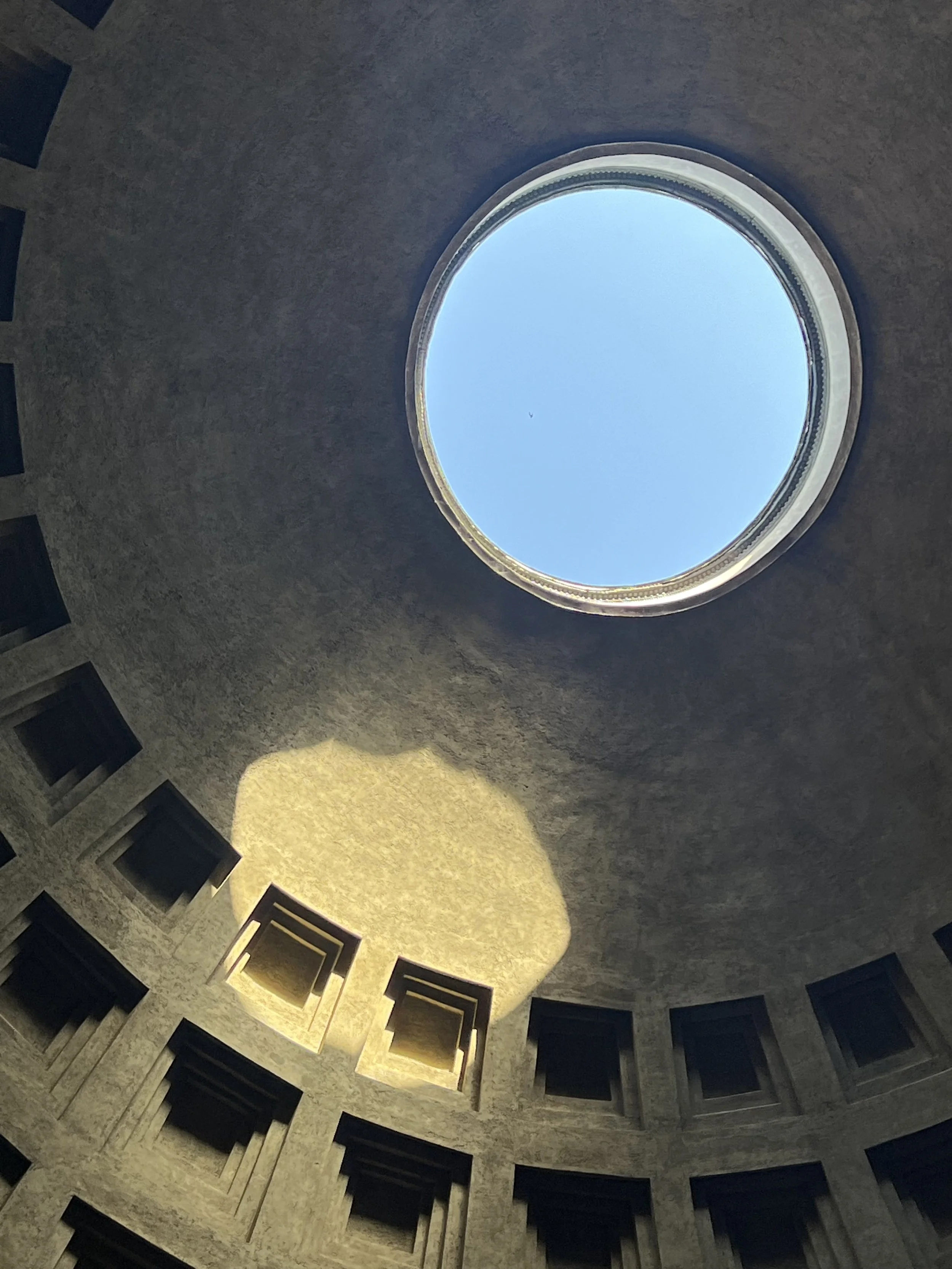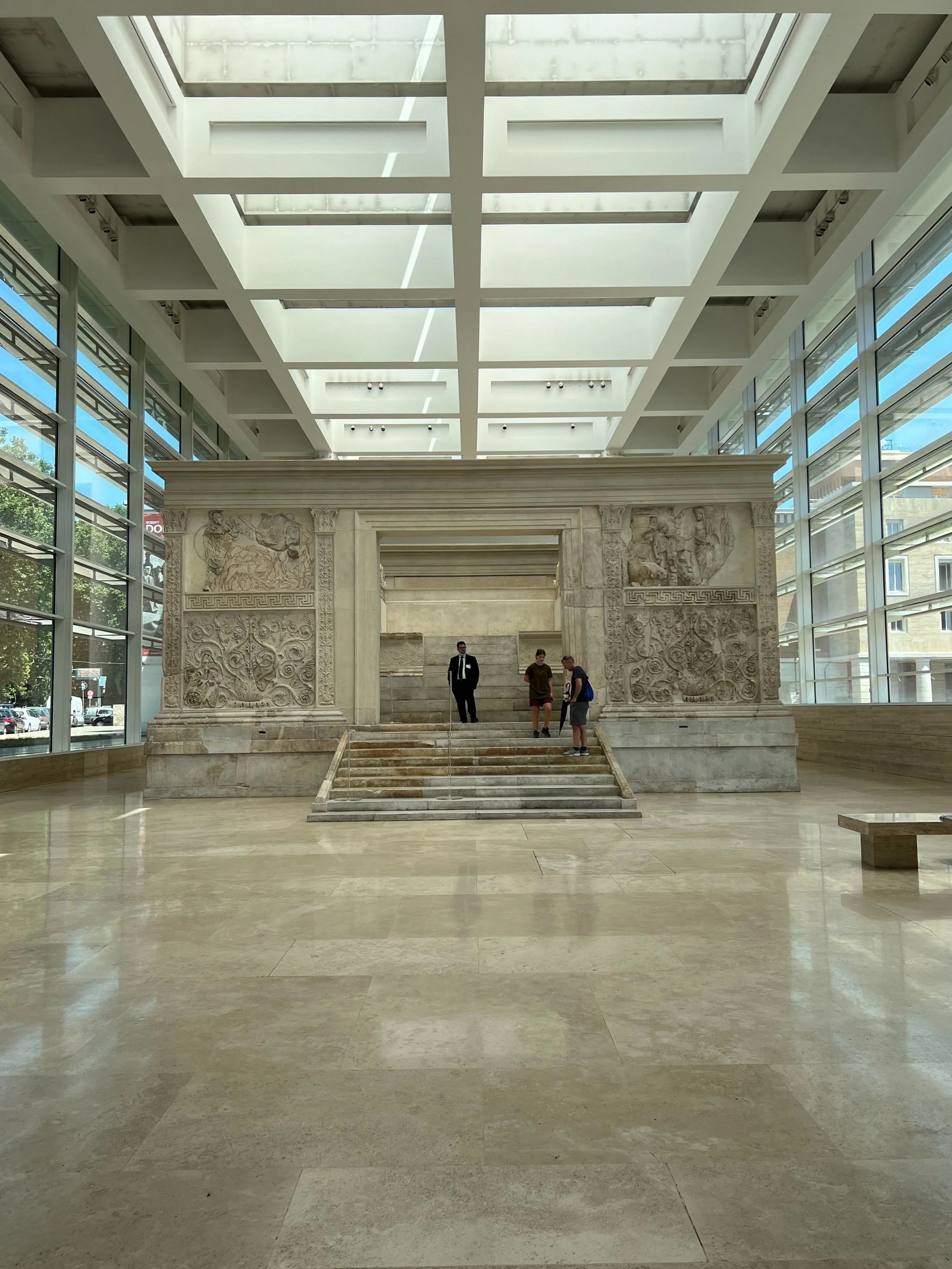The prospect of analyzing the roles of building reuse and historical commemoration in Rome has been daunting, particularly because the reuse of buildings is so integral to the way Rome has developed over time. While ancient structures are now regarded with care and caution, they weren’t always so precious, and there are plenty of examples of ancient buildings that were reused during the existence of the Roman Empire, for example. The city also continues to change: historic, private palazzos are somewhat commonly renovated for commercial use (https://www.dezeen.com/2021/05/27/foster-and-partners-apple-via-del-corso-store-rome/) and residential buildings continue to be updated whenever and however allowable. In order to approach this wide spectrum of reuse, I began by making a list of sites generally relevant to both themes of reuse and commemoration, prioritizing those with overlap between these topics. I’ve been grouping visits to the sites by location rather than theme, which has helped me reflect on thematic connections over multiple days.
In this process, I’ve tentatively identified a few categories in which these projects fall:
Reuse in service of war; i.e. buildings converted into fortresses, etc.
Reuse of war-related buildings
Reuse as result of religious conflict; i.e. pagan churches converted into Christian churches
Given Rome’s extensive known history, I’m sure there are other categories (I thought about looking into buildings altered as a result of Rome’s various sackings, for example, and struggled to find definitive examples) but within the scope of this project, this is what I’ve been considering so far.
When I finish my time in Rome, I’ll take some time to revisit these categories and reflect on the thematic relationships between the sites, but for now, see below for some buildings I’ve visited thus far.
The Ara Pacis is an altar to Pax, the Roman goddess of peace, commissioned by the emperor Augustus to represent the peace and prosperity of the Roman Empire after decades of war. The altar originally stood on the Campus Martius, and has since been relocated and reconstructed within a pavilion designed by Richard Meier. The project to relocate and encapsulate the altar was originally commissioned by Mussolini as part of his larger effort to preserve and showcase Roman accomplishments in service of the Fascist narrative.
This building poses an interesting challenge in its deliberate response to the form of an existing structure. I think it’s successful in its sensitivity to the altar’s scale, proportions and materials: you can see how the column grid, entry wall and ceiling structure align with the footprint of the altar, and the marble used throughout answers to its materiality. The building is dramatic, but it also relatively simple, using just a few materials and major design elements, and providing for little more than the altar itself, a small exhibit, and ticketing area.
Next, the Pantheon. Not only is this a feat of engineering (good trivia fact: it’s the largest unreinforced concrete dome in the world) but it was constructed as a temple dedicated to all Roman gods, as its name literally translates. It was converted into a Christian basilica in 609 AD, after which pagan imagery on the face of the pediment was removed (holes are still visible where this ornamentation was attached) and the seven niches representing the seven celestial bodies of the solar system were eventually populated with statues of Christian figures, among various other minor changes. Christianity became the official religion of the Roman empire during Constantine’s rule in the early 4th century, turning hundreds of years of Christian persecution on its head, and beginning an era of pagan persecution. The Pantheon is one of many examples of pagan temples-turned-Christian, which continue to represent the lasting cultural effects of this period of religious conflict. Ironically, the Pantheon is one of the best-preserved ancient buildings in Rome because it has been in continuous use as a church for so long.
I also find it interesting that some of the core sacred design principles of the Pantheon are in keeping with the Christian tradition: the building represents a perfect sphere, it is exactly as wide as it is tall. Since antiquity, spheres have been central to our understanding of the cosmos, and were associated with the idea of a perfect, continuous universe. The oculus, in addition to the practical application of removing material from the very top of the dome, provides a singular opening for light in the space, potentially suggesting a symbolic connection between Rome and the sun. These original themes are compatible with the Christian narrative, which often utilizes light and dark metaphors to express god’s role. The Pantheon currently displays a painting of Jesus conferring with what I assume are the apostles (there’s twelve of them, anyway) as the oculus shines a spotlight on the group.
Though this is an example of reuse in a different way than a lot of my case studies (the building has retained a very similar use, and remains mostly in original condition) I think the symbolic, religious transformation of the Pantheon speaks to the important role of cultural context in determining the fate and identity of a building.







